Today we have a guest post for you by Samantha Wilcoxson, author of the Plantagenet Embers series amongst other historical fiction titles and another fabulous women’s history blogger. Samantha has taken time out of her current writing (and her first nonfiction project), Women of the American Revolution which will be published by Pen & Sword Book in July 2022.
Read on to find out more about Catherine Donohue!
Catherine’s name is likely one that few recognize, and hopefully that will encourage the reading of her story. Her place in history is not one to which she aspired, but when injustice would have reigned Catherine gave voice to the vulnerable. Catherine Wolfe Donohue was a quiet Catholic woman from Ottawa, Illinois, one of many who might not be remembered if it weren’t for the tragedy of which she unknowingly became a part. When faced with the difficult decision to quietly give up or courageously challenge the radium industry, Catherine was an inspiration to her friends and made law-changing history in the United States.
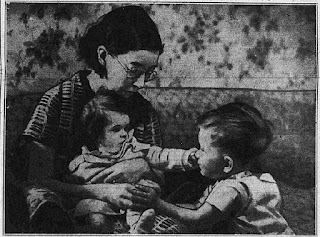
Image from Pearl Payne Collection at LaSalle County Historical Society
Catherine Wolfe was born in 1903 in a midwestern town snugly settled along the banks of the Fox River. She was baptized, married, and took her first communion at Ottawa’s St Columba and went to school with the same young people she attended church with. When she was nineteen, she took a job at the company across the street from St Columba. Radium Dial had taken up residence in the old high school, and they hired young women to paint the fine numbers and lines on watches and instruments with radium infused paint which caused them glow in the dark.
This was an excellent opportunity for Catherine and her friends. Working in a painting studio was more sophisticated and higher paying than domestic service or factory work. Catherine formed close connections with her coworkers, but within a few years she began to develop health problems. Since she was still in her twenties, Catherine dismissed her limp and increasingly sore hip to early onset arthritis, but Radium Dial knew what she did not and fired her before her health declined further.
Catherine married Thomas Donohue in January 1932, just a few months later, despite objections from his family that she might not be healthy enough to be a wife and raise a family. Soon, Tom and Catherine had a son and a daughter. It would have been tempting for Catherine to settle into being a housewife and mother, but she was concerned about her health, even more so because some of her young friends had died in recent years, making Catherine wonder if there wasn’t something dangerous in the paint they had all used in Radium Dial’s studio.
The radium industry by this time was well aware of the dangers of the luminescent paint, but inconsistent and underplayed efforts had been made to ensure the dial painters’ safety. Radium Dial had briefly given the women glass pens for applying the paint in an attempt to end the practice of lip-pointing brushes, but they were quickly discarded since the brushes were more efficient.
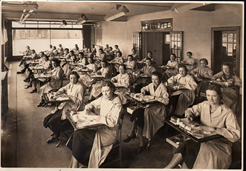
Image from Ottawa Historical Museum
The brushes were also how radium entered women’s bodies. Trained to dip their brush in the paint, point the bristles with their lips, and then paint the tiny numbers on their dials, women like Catherine had been ingesting the radioactive substance for years. Initially told that radium was good for their health and would give them rosy cheeks, as medical professionals did initially believe, the women were not informed when new research and multiple deaths proved that people had been wrong about radium.
Profit is king, and Radium Dial continued operations until forcibly closed, long after the death of Catherine Donohue and others like her. In fact, Radium Dial had taken strides to protect its cash and resources before Catherine’s lawsuit was judged. It wasn’t until her hearing before the Illinois Industrial Commission that Catherine and her co-litigants learned that only $10,000 in assets could possibly be paid – if they won – because Radium Dial’s assets had been transferred to a new business. Luminous Processes operated just a few blocks away from Radium Dial’s old schoolhouse (and did so until the 1980s!).
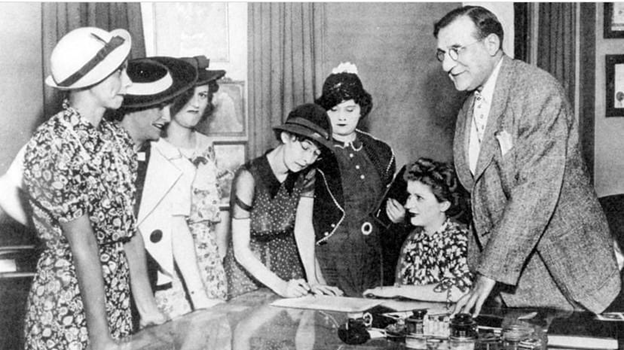
Suffering horribly from radium poisoning, Catherine testified about her years at Radium Dial. She weighed less than 70 pounds at the time of the hearing. Her teeth and jaw bone were disintegrating, and a huge tumor grew on her hip. Catherine had to be carried into the room. Only when a doctor was asked to testify as to her prognosis did Catherine finally break down and fully accept that she was dying.
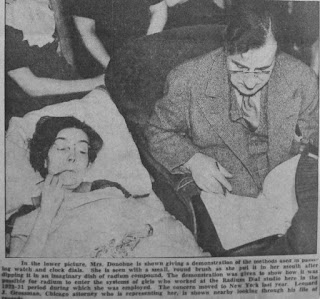
The hearing continued in the Donohue home, so that Catherine could complete her testimony tucked in on the family sofa. Scarcely able to move and her words slurred by the deformation of her mouth, Catherine demonstrated how she had created a fine point on her brushes with her lips, poisoning herself irreversibly.
Catherine was victorious in her case before the Illinois Industrial Commission, and new worker compensation and employee safety laws began to be drafted, but Catherine never saw any of the settlement Radium Dial was ordered to pay. She died on July 27, 1938, while Radium Dial was still filing appeals. The final victory was bittersweet. The Supreme Court refused to hear Radium Dial’s appeal, and Tom, Catherine’s grieving and bankrupted widower, received about $5,700, a fraction of the amount that had been spent on his suffering wife’s medical bills.

Catherine’s true victory came in raised awareness of the dangers of radium and worker exploitation. This could not save her or end the suffering of her friends, but it did decrease the chances that it would happen to another generation of working class women. The dial painters’ cases of radium poisoning also informed researchers during World War II and led to strict precautions in how radioactive substances are handled. During Catherine’s legal battle, she told one reporter, “It’s too late for me, but maybe it will help some of the others.”
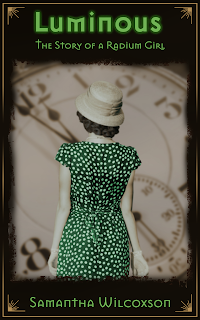
Available for Kindle and paperback on Amazon worldwide.
Writer of historical fiction and sufferer of wanderlust, Samantha enjoys exploring the lives of historical figures through research and visiting historic places. Certain that no person is ever purely good or evil, she strives to reveal the deep emotions and motivations of historical figures, enabling readers to connect with them in a unique way. Samantha is an American writer with British roots and proud mother of three amazing young adults. She can frequently be found lakeside with a book in one hand and glass of wine in the other.
You can connect with Samantha on her blog, Facebook, Twitter, Goodreads, or Instagram.

